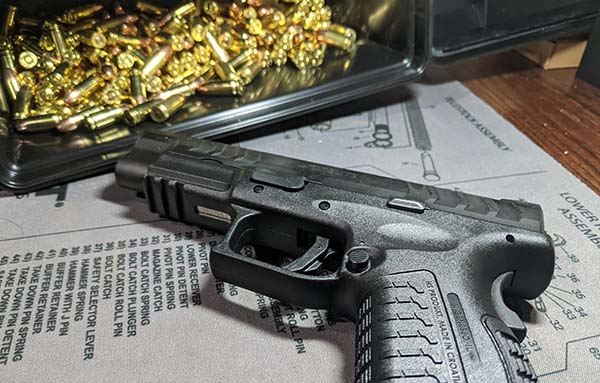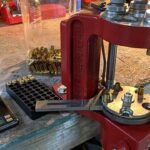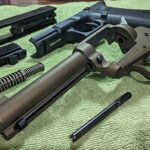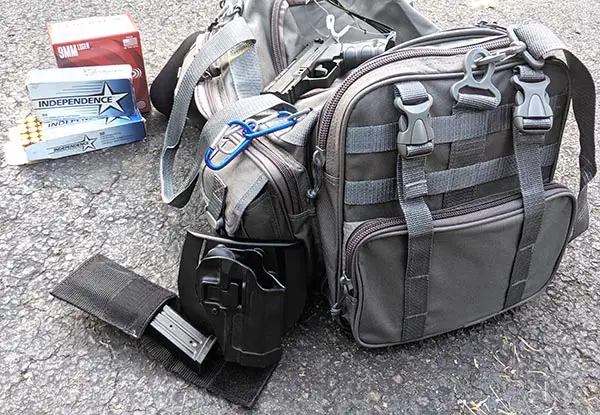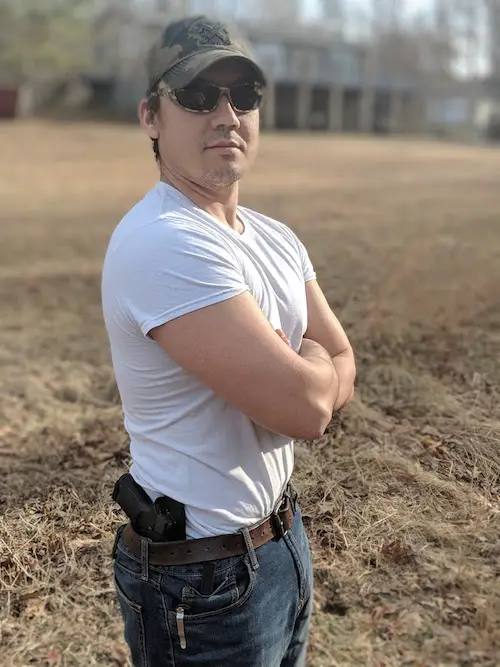Identifying the type and location of your handguns’ safety is important to preventing injury. The number and type of safeties on a handgun vary by make and model. Functionally, there are two types of external safeties; manual and passive. External manual safeties are usually located on the side of the handgun frame or as part of the slide. While external passive safeties are either integrated into the grip or located on the trigger.
Table of Contents
Internal vs. External Safeties
First, let’s differentiate between internal and external safeties. An internal safety has no features on the outside of the gun that a shooter can interact with. Alternatively, an external safety is engage or disengaged by the actions of the shooter.
Below are several examples of internal safeties. Internal safeties are usually found inside the frame of a revolver, and either inside the frame or slide of a semi auto pistol.
- Drop safety
- Firing pin block
- Transfer bar
Additionally, internal safeties are a type of passive safety. Next, lets talk about the differences between manual and passive safeties. Later, I’m going to cover where the safety is on a handgun for both types of external safeties.
Where Is The Manual Safety On A Handgun?
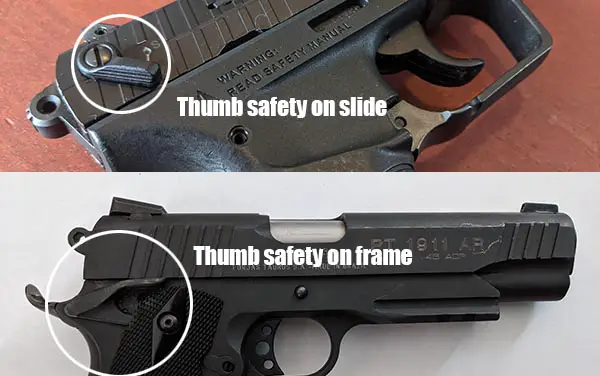
As the name suggests, shooters manually engage or disengage the safety through their actions. First, the most common type of manual safety is the thumb safety. Second, moving the safety lever up or down to the desired position engages or disengages the safety. Finally, the shooting hand thumb operates the safety.
A thumb safety is usually located toward the rear of the handgun frame or back of the slide. Pictured above is the thumb safety on the slide of my Walther PK380 handgun. Additionally, I’ve provided a view of the thumb safety on a 1911 located on the frame. Finally, my other article offers tips on identifying the status of your safety.
Is The Decocker A Safety?
A decocker, or decocking lever, is a mechanical device that lowers the hammer of a pistol onto a live cartridge without discharging the round. Therefore, a decocker is not a safety but a mechanical feature designed to perform one specific action.
Decocking levers are usually found on DA/SA pistols. However, the decocking lever does not necessarily prevent the firearm from discharging on a double action trigger.
Some handgun models, like the Sig P226 for example, have a decocker that is not a safety. Even after dropping the hammer, the double action trigger can still discharge a round. Alternatively, models like the Bereta PX4 Storm have a decocker integrated into the safety. Thus, requiring the shooter to disengage the thumb safety before firing the gun.
Where Are External Passive Safeties Located?
Contrary to manual safeties, external passive safeties engage automatically and disengage when the shooter performs common actions. The passive safety on a handgun is usually located on the back strap of the grip or as part of the trigger.
Where Is The Grip Safety?
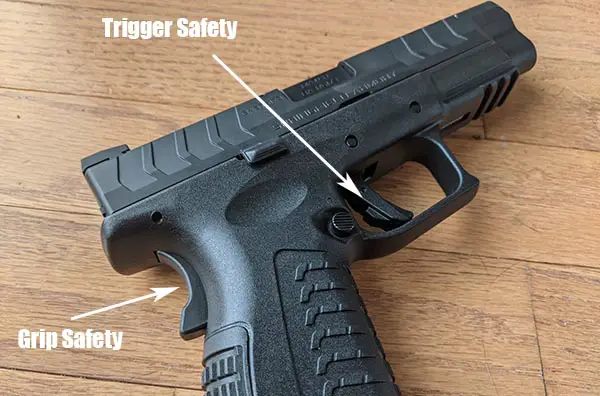
My Springfield XDM, shown above, illustrates the locations of both a trigger safety and a grip safety. The grip safety protrudes from the back strap. Establishing a proper grip depresses the safety allowing the hammer or striker to function properly. I’ll get into the mechanics of how a grip safety works in another article.
Identify & Locate The Trigger Safety
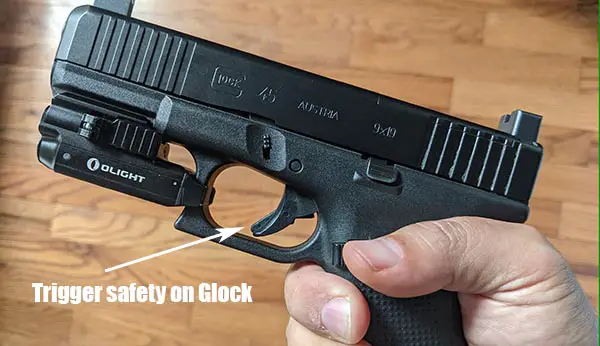
Glock handguns are the most notorious version of a passive trigger safety. Therefore I’ve provided an example of the trigger safety on my Glock 45 in the image above. Located in the center of the actual trigger is the trigger safety which prevents the trigger from moving while engaged. However, the trigger finger naturally disengages this safety while shooting.
To learn more about how the trigger safety works on a Glock, you can check out the videos on the Glock website.
Do All Guns Have A Safety?
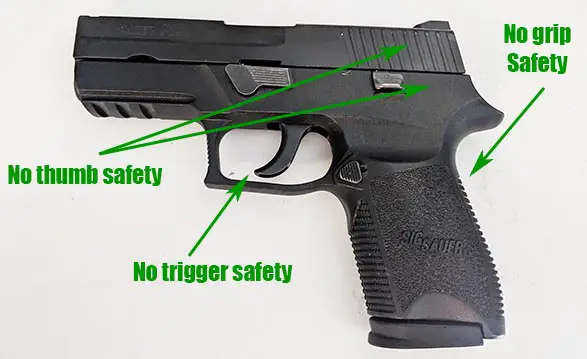
Most modern semi-auto handguns usually have some type of internal safety. However, not every pistol has an external safety. Above is my Sig P250 which is a double action only pistol without any external safeties. But, the Sig P250 does have an internal firing pin block safety.
How Many Safeties Are On A Handgun?
The number of safeties on any given handgun will vary by make and model. A handgun can have as few as one internal safety or more than 4 combined internal and external safeties.
For instance, a 1911 model handgun usually has a grip safety and a thumb safety. Alternatively, the Springfield XDE has a grip safety and trigger safety. As you look up different models of handguns you’ll notice that the number and types of external safeties can vary greatly.
Parting Shots
Hopefully this article has helped you determine the type and location of the external safety on a handgun. However, please remember that safeties are mechanical devices. That is to say, safeties can fail. Therefore, the safety on a firearm is no substitute for the rules of firearm safety. If you’ve found this information helpful then please like, share, or comment.
